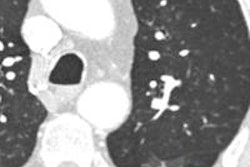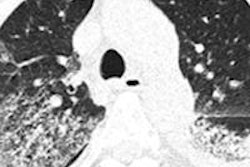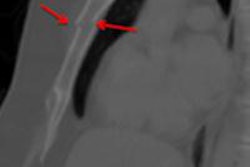Dear CT Insider,
Hot off the press from the New England Journal of Medicine, a new analysis of National Lung Screening Trial data reveals enormous differences in the effectiveness of CT screening, differences that are tied to the risk a patient might have of developing lung cancer.
Researchers found that individuals at highest risk of dying from lung cancer were much more likely to benefit from screening, and the number needed to screen to prevent one death was far better than with mammography. At the same time, CT lung cancer screening was much less effective in those at lower risk.
The findings set the stage for future discussions -- and maybe even fights -- over who should be screened for lung cancer. Get the rest of the story here.
Why is approval for population-based lung cancer screening taking so long in the first place? Dr. Frederic W. Grannis offers a little history and much insight into the question, in an article you'll find here.
The recent answer to one question -- how much does CT lung cancer screening cost? -- seems to bode well for the eventual approval of population-based screening programs. Learn more by clicking here.
Oh, and speaking of long-delayed CT screening exams, will the U.S. ever approve virtual colonoscopy and start reducing the number of colorectal cancer deaths? A leading researcher in the field says yes.
Meanwhile, in the heart, and according to more studies than one can shake a stick at, coronary CT angiography (CTA) has proved it can both detect coronary stenosis and rule out significant disease. But how well does it perform the tougher task of determining the need for revascularization by identifying patients with significant flow-limiting disease -- a place where conventional angiography and SPECT still rule? Find out in this edition's Insider Exclusive, made available to you as a subscriber before our other readers can access it.
Also in cardiac CT, researchers from China found they could reduce the amount of contrast significantly with the use of wide-area-detector CT in their coronary CTA. Not only does less contrast cut the cost and, to a small extent, the risk of the exam, we're also learning that use of contrast spikes the CT radiation dose.
Speaking of dose, a large study concluded that the high volume of CT scans, some performed at unfortunately high doses, may be putting children at greater risk of cancer. But by how much? And anyway, what would happen if they weren't scanned at all? A researcher from the Medical University of South Carolina, who is tired of the scare tactics, eloquently advocated for radiology to calm the waters by taking control of the dose discussion.
Last but not least: Another set of fears, the one driving some clinicians to advocate the removal of every colorectal polyp regardless of size, may be misplaced. A long-term study of patients undergoing polyp surveillance after virtual colonoscopy found that the vast majority of small polyps stay that way. Read all about it in your CT Digital Community.



















